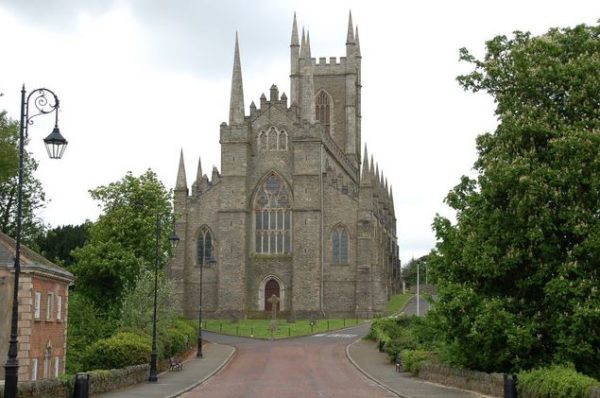Saint Patrick’s Day invokes thoughts of Ireland and its rich culture for many. For those of us who are Irish or have Irish roots, this day holds a special significance.
My ancestors on both sides of my family emigrated from Ireland to Canada during the mid to late 1800s. My maternal grandmother’s family home in County Antrim is particularly meaningful to me from a genealogical perspective, lying at the base of the majestic Mt. Slemish. This is where my Grandma Hannah was born and raised, the land she left behind when she made the journey to Canada. I later discovered that this location also has great historical importance related to Saint Patrick.

Slemish Mountain, located near Ballymena in County Antrim, is reputed to be Saint Patrick’s first home in Ireland. Although he was not born in Ireland, Saint Patrick is considered its patron saint and a prominent figure in Irish culture. Born in Roman Britain (likely in present-day Wales) in the late 4th century, he was kidnapped at the age of 16 and brought to Ireland as a slave, where he spent about six years tending sheep on the slopes of Mt. Slemish. During this period of solitude, he turned to prayer for solace. He experienced a vision urging him to escape and return home, which he eventually did. However, he returned to Ireland around 432 AD with a mission: to convert the pagan Irish to Christianity. According to legend, he banished snakes from Ireland and utilized the shamrock as a teaching tool to explain the Christian Trinity.
Numerous locations across Ireland are closely associated with Saint Patrick. Perhaps you’ve visited some of these or will consider including them in your next trip to Ireland?
Saint Patrick’s Cathedral, Armagh City, Co. Armagh – This Church of Ireland cathedral is believed to stand on the site of a stone church founded by Saint Patrick in 445 AD. It is said that he attempted to convert the Irish kings who ruled over Ulster and adjacent regions at that time. King Brian Boru, one of the most renowned ancient kings, is rumored to be buried within the cathedral grounds.

Down Cathedral, Downpatrick, County Down – This cathedral is perched on the Hill of Down, the rumored burial site of Saint Patrick after his death in 461 AD. The 82-mile-long St. Patrick’s Way begins at the Navan Centre in Armagh and meanders through the area’s historical sites and breathtaking landscapes, eventually arriving at Down Cathedral.
Rock of Cashel, Cashel, County Tipperary – Myths say this rock was dislodged from nearby mountains when Saint Patrick expelled Satan from a cave, causing the rocks to tumble down and land in Cashel. The mountain is dubbed the Devil’s Bite because of this tale. The Rock of Cashel (more formally known as St. Patrick’s Rock) served as the royal seat of the Eoghanachta clan in the 4th century AD. Legend has it that this is where Saint Patrick converted and baptized the clan’s chief, King Aengus, in the 5th century AD.
Croagh Patrick, Westport, County Mayo – Just outside Westport, Croagh Patrick, known as “Ireland’s Holy Mountain” or “The Reek,” is where it is said that Saint Patrick fasted for 40 days and nights at its summit. Pilgrims have continued to ascend the mountain to honor the saint’s fast.
Ireland celebrates its patron saint on March 17th with religious services and feasts. The tradition of turning Saint Patrick’s Day into a day of general celebration and revelry began with Irish-Americans in Boston, leading to customs such as wearing green attire, drinking green beverages, and enjoying green foods (Chicago even dyes its river green in honor of the day). On Saint Patrick’s Day, everyone shares in the Irish spirit! Sláinte!



